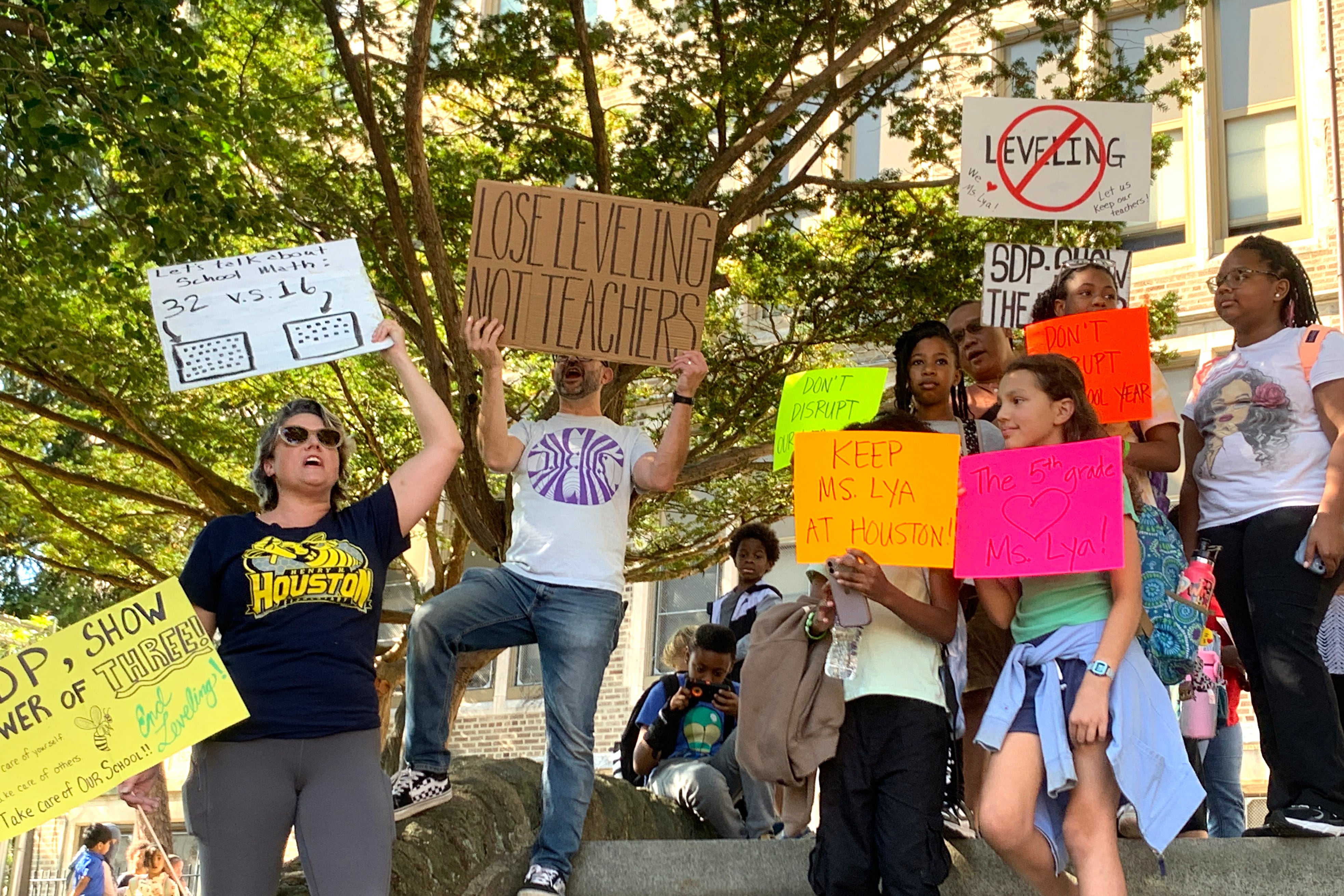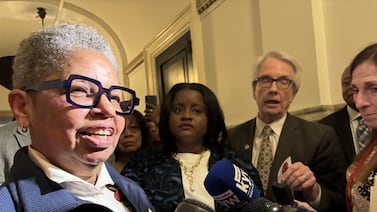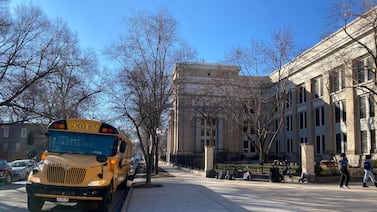Sign up for Chalkbeat Philadelphia’s free newsletter to keep up with the city’s public school system.
The Philadelphia school district will stop shifting teachers around between schools after the academic year starts, a dreaded practice known as “leveling,” Superintendent Tony Watlington announced Tuesday.
The longstanding procedure reassigns teachers based on actual enrollment for each school, instead of predicted enrollment. But teachers and parents have long complained that the annual teacher shuffle at the end of October disrupts and harms student progress as well as school stability.
This school year, 59 schools lost teachers under leveling, according to the district, and 88 teachers changed schools.
In a letter to parents and a video posted on social media Tuesday, Watlington said the district “will reallocate up to $8.8 million from Central Office cuts and energy savings to fund the discontinuation of leveling in any schools or classrooms after the beginning of the school year.”
Christina Clark, a spokesperson for the district, said it’s the district’s intention to eliminate leveling permanently “unless there are significant funding reductions.” During the pandemic, the district suspended leveling only to bring it back.
“We are committed to investing in and protecting our classrooms to the extent we can,” Clark said in a statement.
To make sure that all schools are staffed appropriately from the outset, Watlington said the district will do more outreach to families over the summer to get more accurate enrollment data. If it can estimate more precisely how many students actually show up, it can make sure that enough teachers are assigned to each school, he said.
Education, city officials and parents welcomed Watlington’s news.
“We’re relieved and excited that the district and Superintendent Watlington listened to the parents and community members’ cries to stop leveling,” said Emily Pugliese, co-president of the Houston Elementary Home and School Association, Philadelphia’s equivalent of a PTA; Houston lost a teacher through leveling last October. “We’re really hopeful we’ll see the end of it forever and our students won’t have to go through the damaging process of losing a teacher and being in a classroom with too many kids.”
Why parents worry about the teacher shuffle
During the leveling process, some schools gain teachers, if their enrollment has been underestimated, and others lose them if it has been overestimated.
Because teachers are allotted according to strict class size limits — 30 students in grades K-3 and 33 above that — the lack of two or three students could mean the difference between losing a teacher and keeping one. It could mean the difference, for example, between having two fifth grade classes with 17 students each, or one with 33.
But due to requirements of the teachers contract, if a school loses a position, which teacher relocates has been based on seniority rather than on a principal’s judgment. This meant that if the fifth grade was not large enough to support two teachers, it would be the second grade teacher who has less seniority who is reassigned, resulting in disruption for more than just fifth grade students.
The leveling practice also doesn’t take into account whether the rising fifth grade in the school is large enough to accommodate two teachers the following year, leading to further instability.
The practice has occurred in Philadelphia since the 1970s, but in recent years there have been efforts to dial it back. The district suspended leveling during the pandemic but resumed it in 2022.
Philadelphia Federation of Teachers President Jerry Jordan said Tuesday that Watlington’s decision would promote school and classroom stability. Katherine Gilmore Richardson, the City Council’s Democratic majority leader, issued a statement saying she supported the district’s decision, as did Councilmember Isaiah Thomas, the chair of the education committee.
“I have spoken with countless families on how their children have been impacted by leveling,” Gilmore Richardson said, adding that smaller class sizes in early grades were particularly beneficial for students of color and those from low-income families.
The district’s federal pandemic aid is ending and it faces a budget shortfall without significant funding increases. But the $8.8 million cost Watlington said is sufficient to stop leveling is a tiny fraction of the district’s $4.5 billion budget, and he made sure to say the money was coming from savings elsewhere. The district cannot raise its own funds and is dependent on the city and the state for most of its revenue.
In the midst of a statewide teacher shortage, the district started this school year with more than 200 vacancies for teacher positions, although it’s not clear how many of those positions have remained vacant throughout the year.
Clark said the district started this school year with “the most teachers of any fall in the last eleven years, and our teacher applications for open positions is significantly higher than this time last year.” She said Watlington’s team is confident the rate of filled positions will be even higher in the fall. Clark did not say whether the district has filled all its vacancies for this year.
Leveling has long been a sore subject for parents who say the practice harms students and is something the district should be able to avoid.
During testimony to the City Council in February, Seleny Fernandez, a parent of a 7-year-old at Clara Barton Elementary School, testified in City Council about her concerns that leveling had on her children’s education.
“A lot of those kids, they have big problems learning,” Fernandez said, “And then if you [take] away their teachers, what is going to happen? More problems.”
Fernandez’s husband, Luis Ramirez, told the council that at Clara Barton, their daughter was regularly in classes of 28 kids or more. He argued that this situation in the richest nation in the world “cannot be a money problem.”
“As a concerned parent, I get emotional because my daughter is in this mess,” Fernandez also said.”To me leveling is the same thing as looting. The school district is coming to my school and looting us of the most valuable resources.”
This story has been updated to include comments from a spokesperson for the school district.
Dale Mezzacappa is a senior writer for Chalkbeat Philadelphia, where she covers K-12 schools and early childhood education in Philadelphia. Contact Dale at dmezzacappa@chalkbeat.org.
Carly Sitrin is the bureau chief for Chalkbeat Philadelphia. Contact Carly at csitrin@chalkbeat.org.







